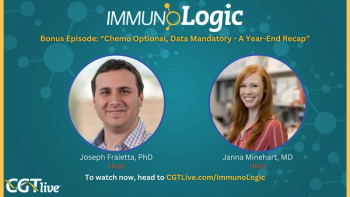
Caribou Biosciences chRDNA Technology Provides a Unique Approach to CRISPR-Based Gene Editing
Steve Kanner, PhD, the chief scientific officer of Caribou Biosciences, discussed the company’s platform for genome editing.
Many companies and academic institutions are currently pursuing gene editing therapy as a more precise alternative to gene-addition therapies. Although, there are a myriad of different possible approaches to gene editing, including to CRISPR-based gene editing. One such approach is that of Caribou Biosciences, which is currently developing a platform technology referred to as Cas12a CRISPR hybrid RNA-DNA (chRDNA) genome-editing technology. The company recently presented preclinical data on use of the chRDNA technology in mice at
Shortly after the conference, CGTLive® reached out to Steve Kanner, PhD, the chief scientific officer of Caribou Biosciences, to learn more about the company’s novel platform. Kanner discussed the rationale behind the approach, explaining the importance of using a hybrid RNA-DNA guide as opposed to an all-RNA guide.
CGTLive: Can you tell us a bit about Caribou’s chRDNA platform?
Steve Kanner, PhD: Over the years, Caribou has developed a platform for genome editing. We've implemented this technology for our ex vivo cell therapies predominantly, but recently we decided to evaluate it in in vivo genome editing, so direct to the liver. We've introduced our chRDNA technology, which I can talk about in detail, into lipid nanoparticles (LNPs) that we could then deliver directly into mice to evaluate the disruption of certain genes in the liver. The chRDNA technology is really the platform that is the basis of our genome editing capabilities. Early on in CRISPR genome editing technology development, it was discovered that all-RNA guides—which is what bacteria make when they use RNA to protect themselves from bacteriophage infection—when you now introduce those into mammalian cells, many off-target genome edits can occur. We're using the natural enzymes, Cas9 and Cas12a, and that will generate double-stranded breaks or mutations in the genome. If your all-RNA guide leads to off-targets (because a couple of mismatches in the genome can still be recognized by the enzyme in the guide) that could lead to deleterious effects.
Caribou set out to address that by introducing DNA residues into the backbone of the guide. Now it's a blend of RNA and DNA residues and we call it CRISPR-hybrid RNA-DNA, or chRDNA for short. That technology enables us to maintain very high genome edits on-target, but we do not detect the off-targets within the limits of detection of the assay, in comparison to an all-RNA guide of the same sequence. That's really the basis.
How is the technology being assessed in preclinical work for in vivo gene editing?
For our evaluation of this technology in vivo, we use these chRDNAs together with Cas12a, but rather than the protein, like we use when we make ex-vivo edits in cells, we use an mRNA. We introduce into this LNP mRNA that's been fully modified. We codon optimize it, we remove all the uridines, we replace it with methylpseudouridine, and that protects it from degradation. The other thing we do is we introduce our chRDNAs, and they're also modified to some degree that protects them, as well. Then we can just introduce that intravenously into mice, and the LNPs will biodistribute to the liver, and we can detect modification of liver genes.
This transcript has been edited for clarity.
REFERENCE
1. Losa-Llabata M, Rajmane P, Stanaway L, et al. Cas12a CRISPR hybrid RNA-DNA (chRDNA)-mediated in vivo genome-editing technology for efficient and functional hepatic gene disruption. Presented at: ASGCT Annual Meeting 2024, May 7-10; Baltimore, Maryland. Abstract #278
Newsletter
Stay at the forefront of cutting-edge science with CGT—your direct line to expert insights, breakthrough data, and real-time coverage of the latest advancements in cell and gene therapy.





































